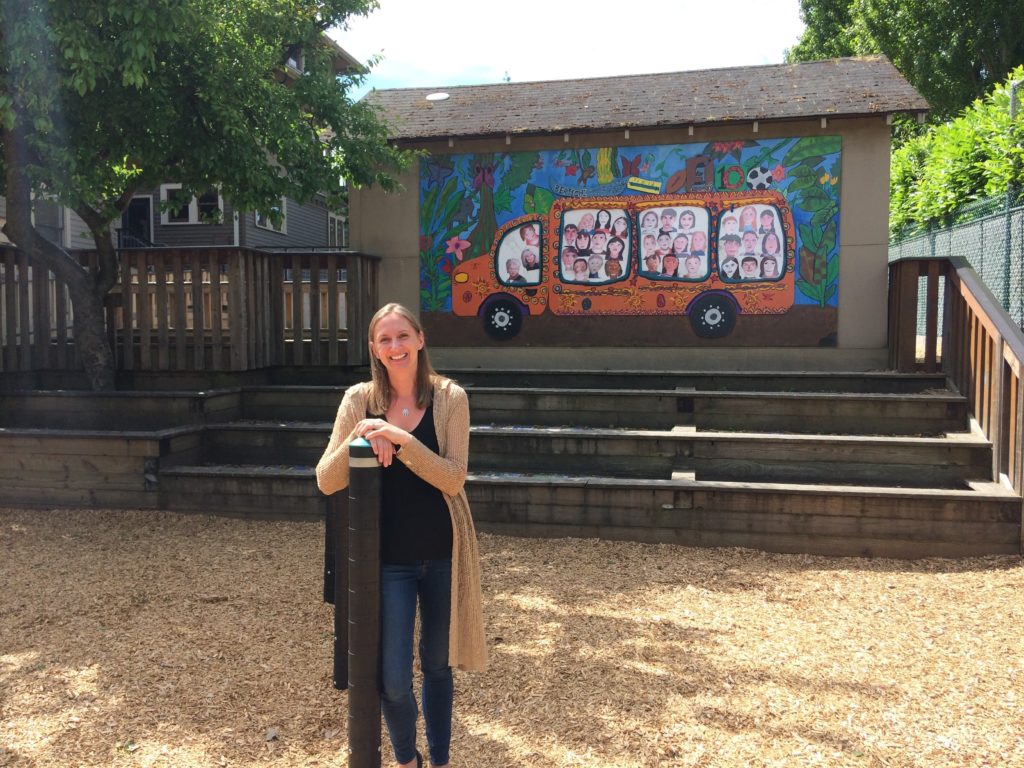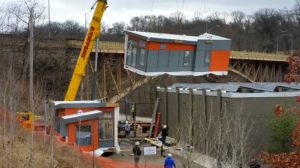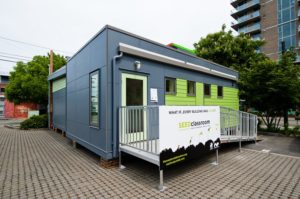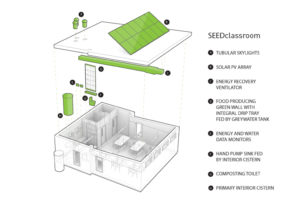A Most Sustainable, Modular Classroom


I’ve been wanting to write this post ever since spending time last summer in company of a bright, knowledgeable, talented and articulate go-getter architect by the name of Stacy Smedley. She was a lead designer of the Bertschi School Living Science Building in Seattle, and is now Director of Sustainability at Skanska USA.
Stacy gave me what time I needed to see, appreciate and ask questions about her Living-Building Challenge™ certified building for Bertschi School. My first intention was to write about its Living Science Building, but its amazing features are very well documented at the link above and elsewhere on the www. (I’ve written about other LBC certified buildings, the Brock Environmental Center and, in 2 parts, the Bullitt Center.)
One particular point of interest was that operating costs of the Bertschi building weren’t performing as expected. As reported by the students, it was using too much energy–the composting toilets were the culprits. So, some solar panels were added to the roof to get back to net zero, and certification.

Towards the end of my visit, Stacy told me about The SEED Collaborative. (SEED stands for Sustainable Education Every Day.) She co-founded the non-profit in 2012 and is its CEO.
The SEED modular classroom comes net-zero-ready. Among commendables, it features non-toxic materials, generates all of its energy requirements and recycles water on-site.
As site parameters aren’t known ahead of orders, an energy model is built to predict the number of solar panels needed on the roof to have the building comply with the particular LBC certification being sought.
Many jurisdictions around the U.S. require potable water at sinks so a utility hook-up is provided for that. Other jurisdiction code requirements have caused SEED to find regional manufacturers where adaptation is less expensive than re-tooling and transporting the modulars cross-country.

How might the modular inform academic curricula for the students?
Easy. For one, leave the systems exposed–no interior walls.
In a magazine interview, Smedley said: “A kid can go up to the cistern and watch the pipe go over to the hand pump, and then to the living wall, and then to the greywater tank. They can trace it with their finger if they want to.” Then they ask “why” questions.
 The answers are provided in an O&M manual for the new building systems and components as required by the particular LBC certification and its Petals. For instance, under the “Water” Petal, all the water components are described as to operating standards and maintenance, including technical data. And, for these plumbing building system components are K-12 lesson suggestions.
The answers are provided in an O&M manual for the new building systems and components as required by the particular LBC certification and its Petals. For instance, under the “Water” Petal, all the water components are described as to operating standards and maintenance, including technical data. And, for these plumbing building system components are K-12 lesson suggestions.
Here’s a video featuring Stacy and her 900 sq. ft. Living Building Challenge™ Petal Certified net-zero building project for the Phipps Conservatory and Botanical Gardens in Pittsburgh.